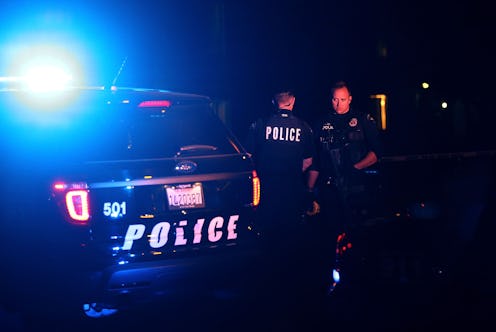News
Here's The Last Female Mass Shooter
Take a look at the hundreds and hundreds of mass shootings that have taken place in recent years, and it's easy to find one commonality: the shooter is almost always a male. Statistically speaking, the chances that a man is the one holding the gun is 98 percent, according to TIME. But a handful of women have committed mass shootings, or at least acted as an accomplice. So who was the last female mass shooter before Tashfeen Malik? It depends on which definition of "mass shooting" you're using.
If you apply the benchmark of at least four deaths, including the shooter(s), you'll find that the last woman to participate in a mass shooting was a little more than a year ago. Similar to Malik's suspected role as an accomplice to her partner, this Las Vegas woman committed the attack with her husband. In June 2014, Jerad and Amanda Miller killed two police officers in a Las Vegas restaurant before entering a Walmart, where they killed an armed civilian. Police killed Jerad during a shootout, while Amanda shot herself in the head and later died at a hospital. The couple was known for publishing anti-government and anti-law enforcement videos prior to the shooting.
If you instead use the FBI's criteria of four or more deaths, not including the shooter(s), you'll go back all the way to 2006 to find a female perpetrator. One-time U.S. Postal Service worker Jennifer San Marco killed six employees and then killed herself at the mail processing plant where she previously worked. Before driving to the plant, San Marco also killed a former neighbor. The office manager of a mental health clinic called police to alert them of odd behavior exhibited by San Marco several months prior to the shooting, but a police lieutenant said the department had no record of a phone call.
San Marco exhibited the same kinds of mental health issues found in many of the male shooters of the last decade. But she could be a lone example when it comes to females carrying out these kinds of attacks on their own.
Candice Batton, director of the School of Criminology and Criminal Justice at the University of Nebraska, Omaha, told NPR in 2013 that women may not be as likely to commit massacres because of the way they place blame.
[Women] are more likely to develop negative attributions of blame that are internal in nature, that is: 'The cause of my problems is some failing of my own. I didn't try hard enough, I'm not good enough.'
In contrast, some research finds that men may be more likely to blame external sources for problems, and then act violently toward those sources.
While authorities have confirmed that Malik played a role in Wednesday's attack in San Bernardino, police have not shared details on the extent of the 27-year-old woman's involvement in the killing of more than a dozen people. But San Bernardino Police Chief Jarrod Burguan did tell reporters that he was "pretty comfortable" with saying that both Farook and Malik were the shooters who opened fire at the health center. With that, it seems Malik has become an exception to the sad rule of mass shootings.
